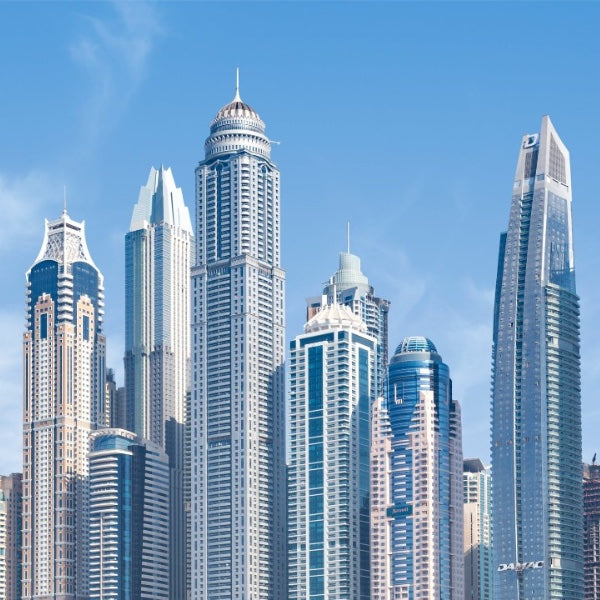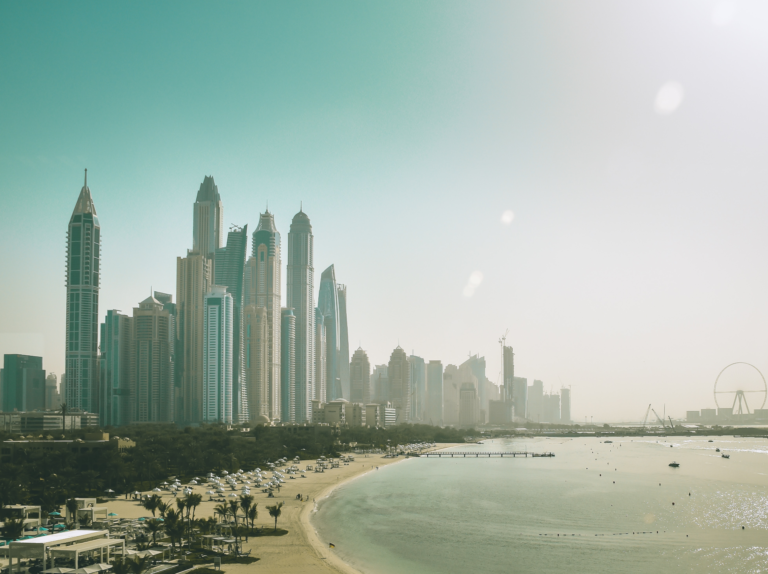The residential real estate market in Dubai continues to show strong growth. In the first half of 2024, 75,543 transactions worth AED 191 billion were recorded. This represents a 36% increase in transactions year-on-year (H1 2023) and a 17% increase compared to the previous half year (H2 2023), underlining the continued growth of Dubai's real estate market.
Average sales prices for villas and townhouses have increased by an average of 28% year-on-year (H1 2023). The average sales prices of apartments have also increased by an average of 17% year-on-year (H1 2023).
Key developments and government initiatives
Major projects: The announcements of major development projects such as the Al Maktoum International Airport in Dubai South and the Metro expansion plan play a crucial role in the economic diversification of the city. Both projects are expected to be completed by 2030 and are expected to support the momentum and prices of new developments in the surrounding areas.
Visa initiatives: The UAE's latest visa announcements, including the Blue and Green Visas, are making Dubai a more attractive city to live and work in. The new visa forms have increased the demand for real estate as they appeal to investors, skilled workers, environmentalists, partners and freelancers looking to settle in Dubai, not least due to growing markets.
Supply vs. population growth: an analysis
The pipeline for turnkey residential properties in Dubai is expected to increase significantly in 2025 and 2026. To ensure rising and stable prices in the market in the long term, it is essential that the city can rely on continuous population growth.
The population growth forecast used in the chart is based on the average annual growth rate since 2020. Should this positive population growth forecast continue, it is clear that the introduction of new off-plan projects will be necessary to adequately supply the market and meet the increasing demand.

Population growth forecast
The population growth forecast used in the chart above is based on the average annual growth rate since 2020. A longer-term average growth rate would result in a steeper growth forecast.
For example, the population at the end of the first half of 2024 was 3,739,635, an increase of 65% compared to the 2,270,128 inhabitants at the end of the first half of 2014.
If this 10-year growth rate of 65% were to continue over the next decade, the population would grow to around 6,159,178 by 2034. Regardless of the population projection method chosen, it is clear that the introduction of new off-plan projects is necessary to adequately supply the market and meet the increasing demand.
Should the growth rate slow down, this could have a direct impact on prices.
Conclusion
What was already responsible for growth forecasts in the past will also apply to Dubai's development in the future.
Dubai will continue to position itself as a hub and future-oriented metropolis in the region and intensively cultivate its magnetic effect on the surrounding countries, Europe and Asia. The necessary infrastructure will be built and made available thanks to medium and long-term development planning.
An ambitious growth scenario can only work with efficient infrastructures. In this sense, real estate development plays a central role as a driver of growth.




